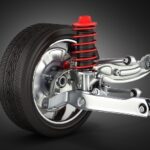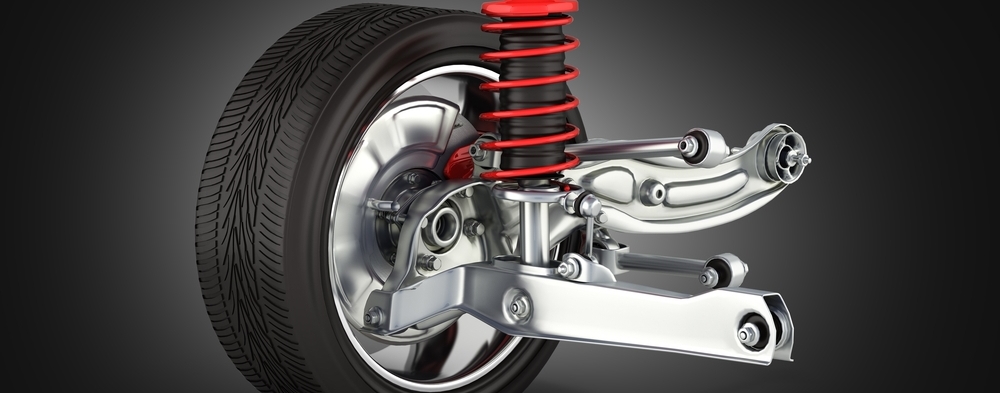 Car shaking is a very common but often ignored phenomenon – especially when it is intermittent or mild. As a society, we are pretty busy with work, family, and leisure activities 24/7. Taking time out of an active schedule to address a seemingly minor issue like car shaking can seem unnecessary. However, car shaking can often be the first symptom of a serious automotive issue, like broken engine mounts, loose lug nuts, or damaged wheel bearings. Let’s take it step by step and review the symptoms, diagnostic choices, and repair options.
Car shaking is a very common but often ignored phenomenon – especially when it is intermittent or mild. As a society, we are pretty busy with work, family, and leisure activities 24/7. Taking time out of an active schedule to address a seemingly minor issue like car shaking can seem unnecessary. However, car shaking can often be the first symptom of a serious automotive issue, like broken engine mounts, loose lug nuts, or damaged wheel bearings. Let’s take it step by step and review the symptoms, diagnostic choices, and repair options.
Step One: Identify Car Shaking Symptoms
A car can shake for many reasons; sometimes, identifying when the shaking occurs can help pinpoint the cause. Below are some typical car shaking symptoms broken down into three categories: While Accelerating, While Braking, and While Turning.
Car Shaking While Accelerating
If your car shakes while accelerating, it can be a scary experience and potentially dangerous as well. Let’s look at some possible causes of car shaking when accelerating:
Broken Engine Mounts
Engine mounts attach the engine to the vehicle’s chassis. They consist of a hard rubber material that helps absorb vibrations when the engine is running. When an engine mount is loose, damaged, or broken, the driver may feel the vibrations from the engine. The shaking sensation may be mild when idling but can become more pronounced during acceleration. A loose, damaged, or broken engine mount can create a domino effect within the engine compartment, as other components will bear more load.
Damaged CV Joints
CV joints are inside a protective cover called a boot at the end of each axle. Typically, there is both an inner and outer CV joint with its own boot. A tear or hole in the joint boot can cause water and dirt contamination to the grease that protects the parts inside. Continued use with insufficient lubrication creates direct metal-on-metal contact in the joint, leading to excessive wear, damage, and failure. A damaged inner CV joint will turn mild vibrations into severe shaking during hard or fast acceleration.
Faulty Brake Caliper
A faulty brake caliper stuck in a closed position can cause shaking or vibrations while driving or stopping. Oftentimes, with a stuck brake caliper in the closed position, the steering wheel will vibrate as you accelerate to higher speeds.
Loose Lug Nuts
Loose lug nuts on one or more wheels are a simple yet common problem that causes car shaking. Improperly torqued lug nuts loosen over time, allowing the wheel to wobble when rotating. While driving, especially at higher speeds, it feels like the car is shaking or vibrating. If the wheel has numerous loose lug nuts, this can be quite dangerous, as the nuts may entirely fall off, dislodging the wheel from the vehicle.
Unbalanced Wheels
Unbalanced wheels often create a sensation described as shaking, vibrating, or bouncing when traveling at higher speeds. Your vehicle’s wheels include the rubber tires and the metal rim. Once mounted, they never have the same weight all the way around, so they require balancing to ensure a smooth rotation. The tires rotate faster at high speeds, making the vibration more noticeable. You may experience a shaking feeling in the steering wheel or your seat.
Worn Suspension
Your vehicle’s suspension system keeps the wheels in direct contact with the road surface. When operating correctly, the suspension provides a smooth ride. On the other hand, a worn suspension system may create a shaking or vibrating sensation when you accelerate.
Common worn or faulty suspension components include:
- Ball Joints: The pivot points between the vehicle’s suspension and wheels.
- Shocks or Struts: The components that absorb shocks, provide a smooth ride and help stabilize your vehicle.
- Wheel Bearings: A one-piece hub assembly, between the drive axle and the brakes, allowing your wheels to rotate smoothly.
Car Shaking While Braking
If you notice your vehicle shakes more while braking, the following components may be to blame.
Bad Brake Rotors
When you engage the brake pedal, your vehicle’s brake pads push against the brake rotor. Car shaking and a vibrating brake pedal while braking are strong signals that you have bad brake rotors.
Faulty Brake Caliper
A faulty brake caliper stuck in a closed position can cause shaking or vibrations while driving or stopping. You may smell a hot, burned odor or even a little smoke from the affected brake when stopping.
Car Shaking While Turning
Minor car shaking may not be that noticeable when accelerating or braking but becomes much more pronounced while turning. In these cases, the following issues may explain the reason.
Damaged Wheel Bearings
Damaged wheel bearings create unusual sounds like humming, chirping, or clicking. These sounds can increase while turning. Other symptoms of damaged wheel bearings can include wobbling or pulling to one side and uneven tire tread wear.
Tire Or Wheel Issues
If an object gets caught in your tire or rim, your vehicle may shake while turning or traveling at higher speeds. Let’s review some possible tire issues that can create a shaking feeling while driving:
- Object lodged in the tire tread or sidewall
- Dented or cracked rim
- Snow or ice stuck in the wheel well, rim, or axle
- Bald tires
- Under-inflated tires
- Over-inflated tires
- Excessive and uneven tire tread wear
Step Two: Diagnose Car Shaking
Once you have identified when your car shaking symptoms, let’s move on to step two and try to diagnose the reason.
Visually Inspect Components
The easiest way to diagnose the problem is by visually inspecting the most likely culprit based on your findings in step one. Your owner’s manual often has troubleshooting suggestions and diagrams to aid in locating components.
- Use your eyes to inspect the part for apparent damage.
- Use your nose to detect unusual odors (like burned, charred, hot, etc.).
- Use your hands to manipulate the part to see if the damage is hidden (i.e., rotate the tire to see all the way around it, push the engine at each mount to see if it moves, try to turn each lug nut by hand – they shouldn’t move easily).
On-Board Computer Diagnostic System
Suppose your visual inspection comes up empty or inconclusive. In that case, a computer diagnostic code may be necessary to determine the problem. Check your dashboard for illuminated warning lights, then look them up in your owner’s manual. Sometimes, there will be no warning light, but your vehicle’s computer may have generated an error code. You need an OBD/OBD-II code reader to access the error code. If you do not own an OBD diagnostic tool, some auto body parts retailers will do the test for you. You can also take your vehicle to your local auto service center for a complete diagnostic service to locate the cause of your car shaking.
Step Three: Schedule Vehicle Service
With most modern cars, fixing issues requires a highly trained and skilled technician with specialized equipment. So, unless you are an experienced grease monkey who loves to work on cars in your well-stocked home garage, scheduling vehicle service is your best bet to identify and resolve your car shaking issue quickly.
Car Shaking Diagnostic Services in Kirkland, WA
Since 1979, Fisher’s Auto Service, Inc. has provided exceptional and reasonably priced vehicle diagnostic services in Kirkland, WA. If you are experiencing car shaking, let our ATI-certified technicians perform a thorough inspection, including wheel bearings, lug nuts, and engine mounts. We will quickly diagnose and repair your vehicle’s issues to get you safely back on the road.
Make An Appointment
Call us at (425) 655-1549 or visit our website to make your appointment today!

